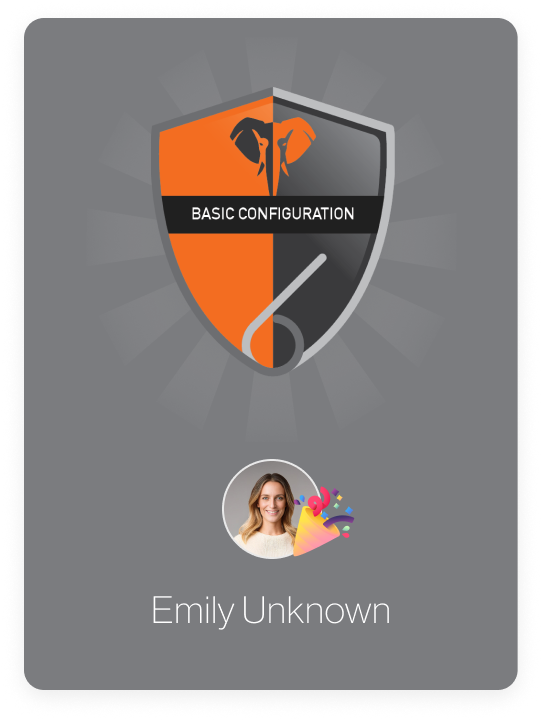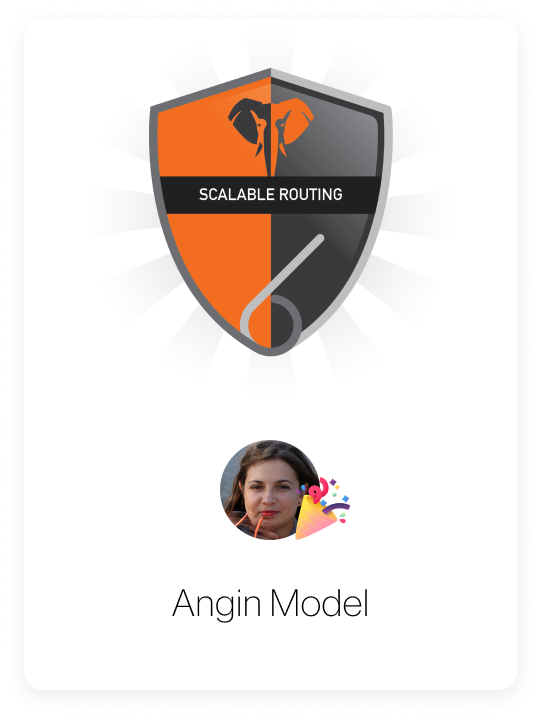Certified IPv6 Engineer(Silver)
Enhance your career with the Certified IPv6 Engineer (Silver) certification, designed to validate your IPv6 knowledge and skills. Get certified today and take a significant step towards advancing your expertise and opportunities in the industry.

Join over 280+ certified IPv6 engineers








Certified IPv6 Engineer(Silver)
Enhance your career with the Certified IPv6 Engineer (Silver) certification, designed to validate your IPv6 knowledge and skills. Get certified today and take a significant step towards advancing your expertise and opportunities in the industry.

Join over 1000+ certified IPv6 engineers
Test takers

NPS

Nationalities

Partners

Who should take this exam?
Our Certified IPv6 Engineer (Silver) certification is ideal for networking professionals, IT students, and anyone looking to deepen their understanding of IPv6 technologies. Whether you want to enhance your career prospects or stay current with industry standards, this certification will equip you with the necessary skills.
- Network Engineers seeking professional advancement
- IT students aiming to expand their knowledge
- Professionals transitioning into new IT roles
Who should take this exam?
Our Certified IPv6 Engineer (Silver) certification is ideal for networking professionals, IT students, and anyone looking to deepen their understanding of IPv6 technologies. Whether you want to enhance your career prospects or stay current with industry standards, this certification will equip you with the necessary skills.
- Network Engineers seeking professional advancement
- IT students aiming to expand their knowledge
- Professionals transitioning into new IT roles
Certification overview
Get certified with ease and confidence. Our Certified IPv6 Engineer (Silver) exam is designed to fit seamlessly into your schedule.

90 minutes
Complete your certification in just
90 minutes.

60 Questions
60 targeted questions.

$100
Valid for 2 years.

Online Proctored Exam
online proctoring.

Passing Score
Achieve a passing score of 75% to earn your certification.

90 minutes
Complete your certification in just 90 minutes.

60 Questions
Test your knowledge with 60 targeted questions.

$100
Valid for 2 years.

Online Proctored Exam
Convenient and secure online proctoring.

Passing Score
Achieve a passing score of 75%
to earn your certification..
Exam Blueprint
Detailed breakdown of what to expect in the Certified IPv6 Engineer (Silver) exam
IPv6 Basics | 5%
- Recognise and work with IPv6 notation
- Shorten and expand IPv6 addresses using zero compression and suppression rules
Understanding IPv6 Addressing & Address Types | 5%
- Describe address scope as applied to link-local and multicast addresses
- Recognise valid global unicast addresses
- Recognise valid link local, unique local, multicast
- Create solicited node multicast address for any address
- Identify reserved interfaceIDs
- Be able to recognise EUI-64 based interfaceIDs
- Identify well-known and reserved IPv6 addresses and prefixes
- Simulate address selection for any given set of addresses
Subnetting and Address Planning | 15%
- Given a network description, estimate the required IPv6 prefix
- Given an IPv6 prefix, break it into N equal parts
- Given an IPv6 prefix of length L, break it into subnets of length L’
Comparing IPv6 to IPv4 | 5%
- Describe the use of each field of the IPv6 base header
- Describe use of extension headers
- Identify IPv4 header equivalents of IPv6 header fields
- Read and interpret packet network captures
- List the IPv6 equivalents of common IPv4 protocols
Neighbour Discovery Protocol | 20%
- List and describe the node functions of ND
- List and describe the host functions of ND
- List and describe the router functions of ND
- List and describe the 5 ICMPv6 messages that make up ND
- List and describe key ND message options and their functions
- Interprete ND messages from packet captures
- Describe how Duplicate Address Detection works
- List the key states of an address during Duplicate Address Detection
- Describe how Link-Layer Address Resolution works
- Describe how Neighbour Unreachability Detection works
Basic Configuration | 10%
- Configure and verify basic IPv6 for clients (Windows, Linux, Mac OS X)
- Recognise and interpret basic IPv6 configuration on network operating systems (Cisco IOS, Junos, RouterOS etc)
- Diagnose basic misconfigurations on various platforms
- Interprete common outputs for basic IPv6 tools like like ping6, traceroute6, etc
Configuration Provisioning | 20%
- List the required configuration parameters for clients and CPEs
- Describe provisioning using Router Advertisements
- Describe provisioning using DHCPv6
- Compare and contrast RA-based and DHCPv6-base provisioning
- Describe the use of various flags in Router Advertisements
- Describe how Stateless Address Auto-configuration (SLAAC) works
- Decode and analyse packet exchanges that make up SLAAC
- Describe how both stateless and stageful DHCPv6 works
- Decode and analyse packet exchanges that make up DHCPv6
- Describe how Prefix Delegation is done using DHCPv6
- Decode and analyse packet exchanges during DHCPv6
- Recognise the correct configuration of SLAAC on different platforms
- Recognise correct configuration of DHCPv6 on different platforms
Basic Routing & Forwarding | 10%
- List the IPv6 equivalents of IPv4 standard routing protocols RIP, OSPF, ISIS, BGP
- Understand key protocol differences of IPv6 versions of RIP, OSPF, ISIS and BGP
- Decode the contents of the IPv6 routing table
- Mentally simulate the routing decision process given a routing table
- Describe the end-to-end IPv6 packet delivery process
Basics of Transition Techniques | 10%
- List the classes of transition techniques.
- List the major types of current transition techniques.
- Given a network topology, select which class of transition techniques to use.
- Given a network scenario, select the most appropriate transition technique to use.
